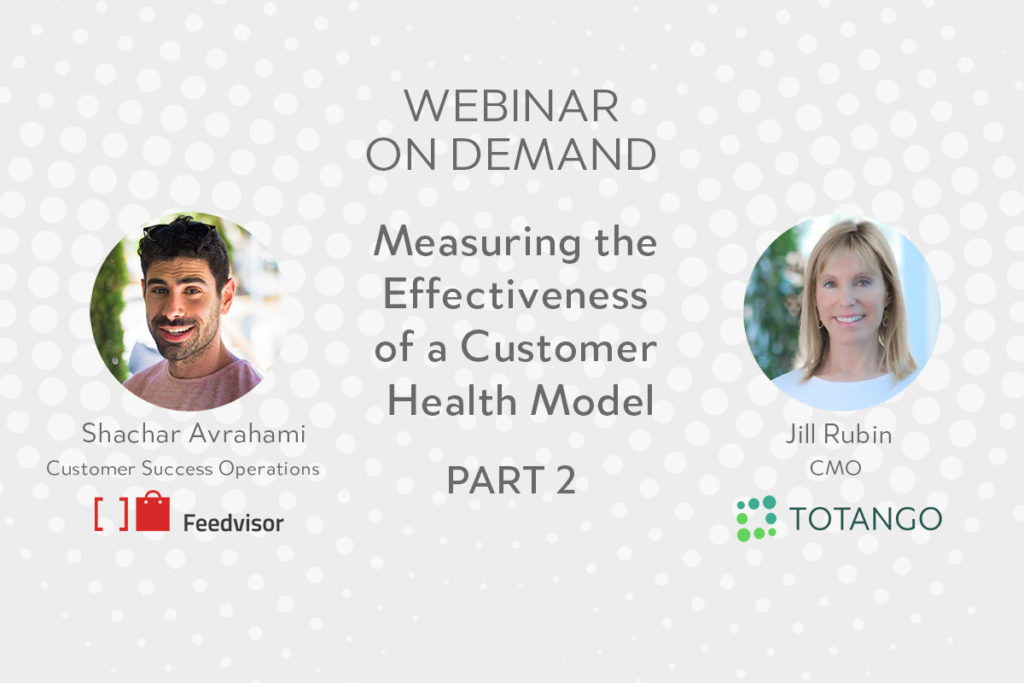Customer Health continues to be a hot topic among Customer Success professionals for obvious reasons. Getting your customer health model right is critical to the foundation of a great customer success operation.
In part 2 of our customer health webinar series, we tackled “How to Measure the Effectiveness of a Customer Health Model” and discussed a more advanced approach to customer health. We were fortunate to have Shachar Avrahami, Customer Success Operations Manager from Feedvisor. He shared his experience and perspective on how to monitor and fine tune their health model to achieve desired results.
Leveraging your Customer Health Model
Once you build a customer health model (learn how in Part 1 of the series“How to Build an Effective Health Model”), organizations need to think about the health model from several perspectives – are you leveraging it, is it working, and when should you modify it. When looking at leveraging the model, organizations should:
– build an early warning system with alerts and notifications
– use it to forecast churn, renewal and upsell opportunities
– set up trigger-based emails to nurture accounts back to good health
– make company health information visible to everyone in the company
It’s easy to think that the work is now done after your health model is up and running. Unfortunately, it too needs nurturing. You should periodically conduct a churn analysis to see if you can gain insights into specific patterns, or if your health score is accurately reflecting problem customers. The last thing you want is to be surprised by churning customers, or if you miss your quota at the end of the quarter. Tweak your health model as often as necessary. If your health model is simple, you may not need to adjust very often. You need to monitor and test.
Measuring Customer Health in 4 Stages
Feedvisor has a 4-stage approach to building a Customer Health Score and periodically adjusts it to give better churn, renewal, and upsell predictions. They learned that they were not adequately predicting churn in enough time to resolve it so they went back to the drawing board and redefined the parameters for health. They looked at key categories – awareness of customer status, their relationship with the customer, and the breadth and depth of product usage. They redefined the metrics for each of those categories and created automated SuccessPlays and Campaigns to enable the CSMs to properly address the health changes.
Lessons from Creating a Customer Health Score
– Building a Customer Health Model is not a one-time job
– Constantly analyze churn and renewals
– Measure the health model with empirical data
– Good correlations and predictions = trusted model
For more information on measuring and modifying a Customer Health model, view our webinar:
An important aspect to customer health models is technology that can automate real-time health changes and send alerts when accounts have changed health for any reason. If you would like to see how Totango can help your company develop a successful customer health model, request a demo today.

